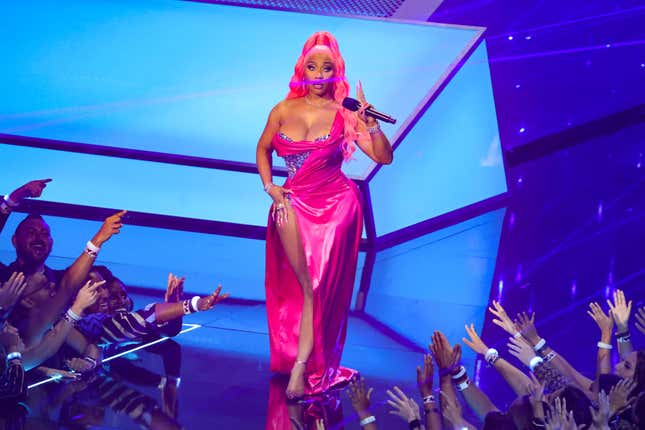
“The BBL era is over,” proclaims a robotic voice overlaying video after video of celebrities with noticeably slimmed down backsides on Tik Tok.
The Kardashians, who sparked the current media obsession with having a big butt and a tiny waist in mainstream (read:white) culture, feature heavily in these videos.
Tik Tokers speculate wildly about whether Kim and Khloe Kardashian have had their alleged butt implants removed or their Brazilian Butt Lifts (BBLs for the uninitiated) reversed.
There’s little mention of the dangers of getting a BBL, a surgery doctors have started calling the most dangerous cosmetic surgery in the world. And that’s because these videos aren’t really about cosmetic surgery.
They’re about the death of our cultural fixation on big butts and the return to the obsession with being ultra thin. Think Kate Moss circa the 2000s saying, “nothing tastes as good as skinny feels.”
As someone who used to do makeshift juice cleanses, I’m really not emotionally prepared to go back to that place.
And specifically, as a Black woman, I can’t help but feel especially weird about this idea of our bodies, or at least the fetishized version of our bodies, going out of style.
Let’s face it: even if the Kardashians are famous for their butts, Black women have always been culturally synonymous with big booties. Since at least the 1800s, white folks have been obsessed with Black women’s butts.
In 1810, Sarah Baartman, a Khoekhoe South African woman, was displayed at various ticketed exhibits throughout Europe by a British slave owner. White onlookers gawked at Baartman’s large backside, which stood out against her small frame.
After she died, a doctor dissected Baartman’s body and private parts for people to stare at. So that even in death, she was unable to regain her bodily autonomy.
The fixation with Black women’s bodies and butts has obviously continued into modern times. In 2012, Danish tennis player Caroline Wozniacki, attempted to “imitate” Serena Williams by putting towels in her skort to make her butt resemble Williams’s backside. At the time, people pointed out that Wozniacki’s impression wasn’t just a mockery of Williams but of Black women and our bodies in general.
Nowadays, the idealized version of Black woman’s’ bodies is “in.” Cardi B., Beyonce, and Nikki Minaj are all proof of that. But average Black women, and especially Black women who don’t fit into that specific thin but large assed mold, like Lizzo, are still regularly mocked for their bodies.
And therein lies the problem with lifting up a fetishized version of what Black women look like as some kind of trend. You’re always going to make the Black folks who don’t fit that mold (i.e. fat, gender queer, and disabled folks) feel like shit (or at least society will try).
And eventually you’re going to make everyone feel like shit when the trend inevitably dies, which is why bodies should never have become trends in the first place.
So maybe the death of the big booty tiny waist culture isn’t a loss; it’s a liberation. Maybe this is an opportunity for us to focus on actually being inclusive and not letting white culture, thin culture, and the Kardashians in particular, impact how we see ourselves.

